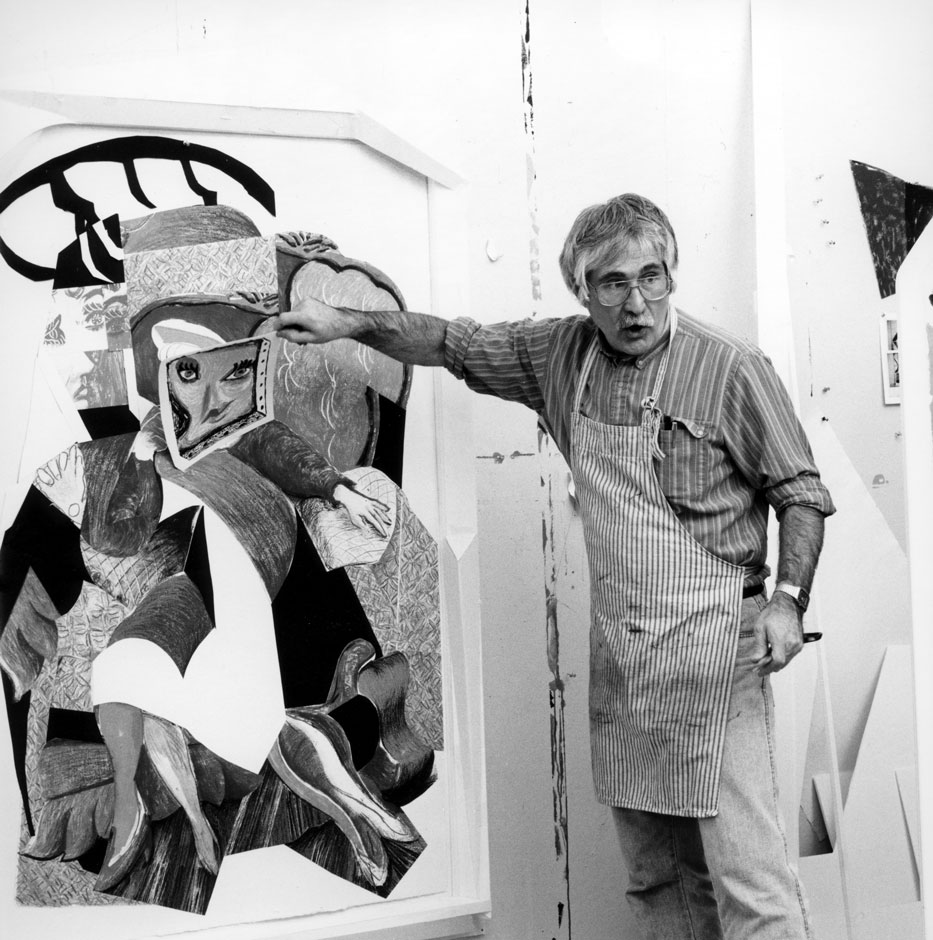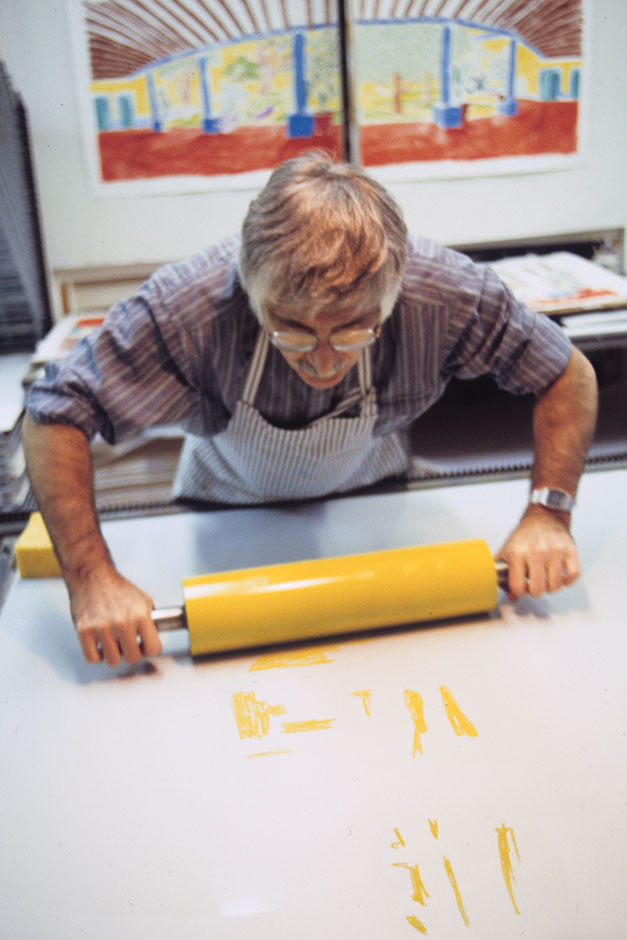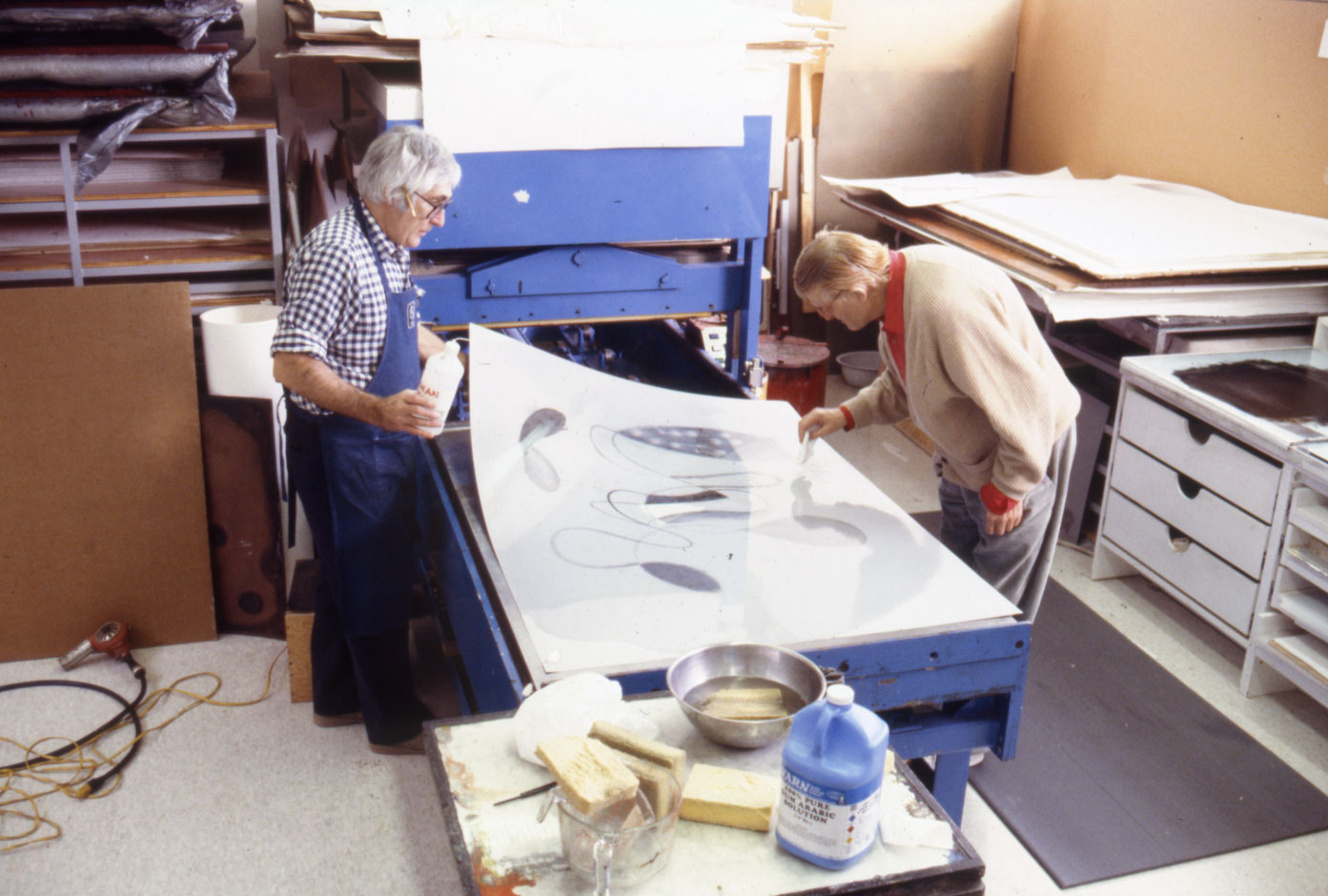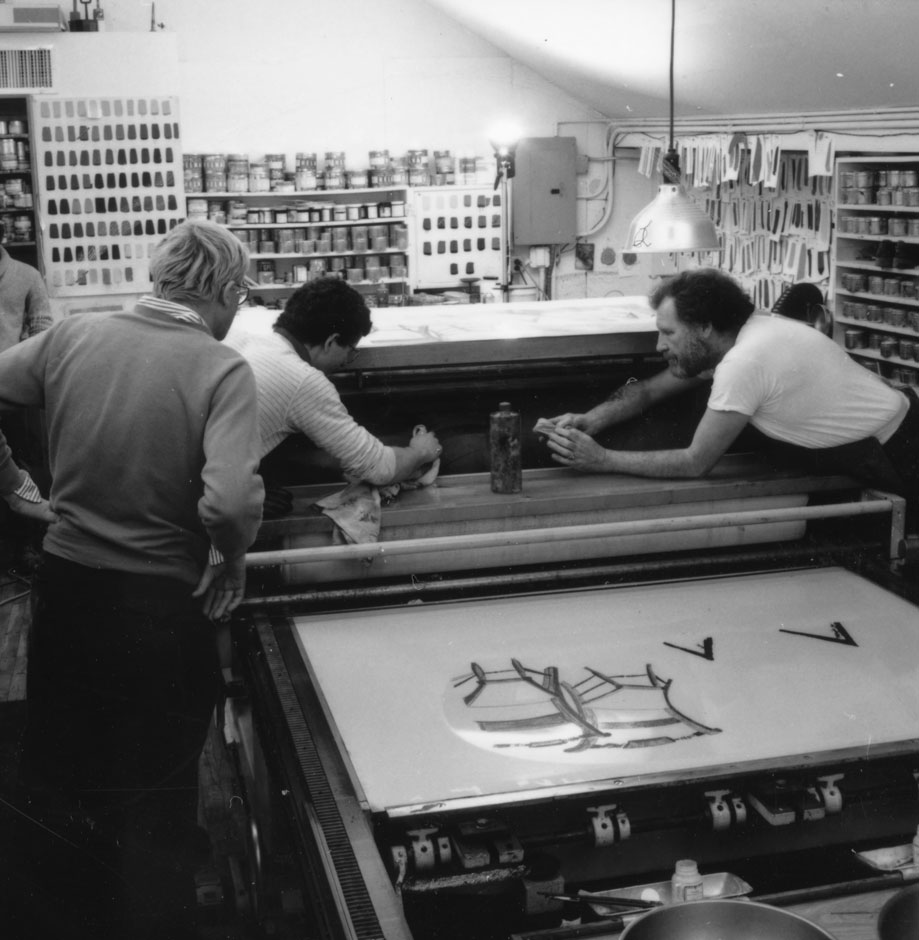Style & Technique
Life-long Delight in Invention
David Hockney is an enthusiastic artist who reinvents himself repeatedly as such.
Hockney’s studies corresponded to those of traditional artist training, meaning precise observation of the motif, especially nude drawing, but also portraits and still lifes. Hockney’s works from his student years (1953–1957) are therefore traditional, old school. But as a virtuoso painter, Hockney quickly appropriated different styles, processing various tendencies in modernism and contemporary painting, orienting himself around Henri Matisse and Francis Bacon and revisiting the Italian Renaissance as well as Egyptian painting.
Breaches in Style
A visit to the large-scale Picasso exhibition at the Tate in London in 1960 was a key experience for Hockney. He went back to the exhibition eight times, enthusiastic about the diversity of Picasso’s styles, something that encouraged his own delight in experimentation. In 1962 he presented four works in totally different styles at the Young Contemporaries under the heading Demonstration of Versatility.
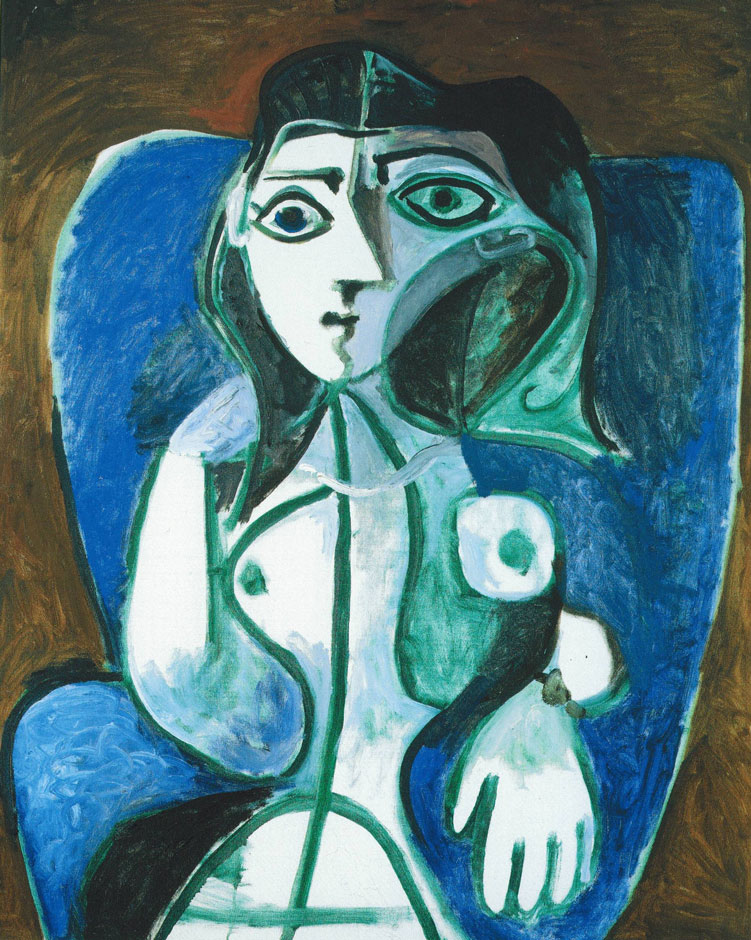
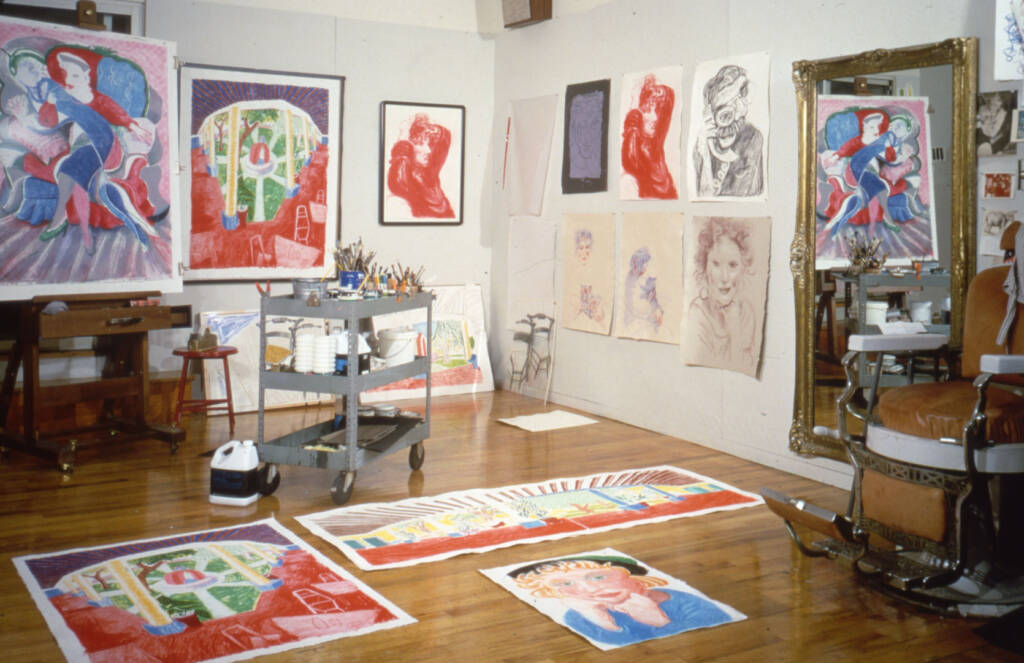
“I deliberately set out to prove I could do four entirely different sorts of picture like Picasso.”
David Hockney, 1965
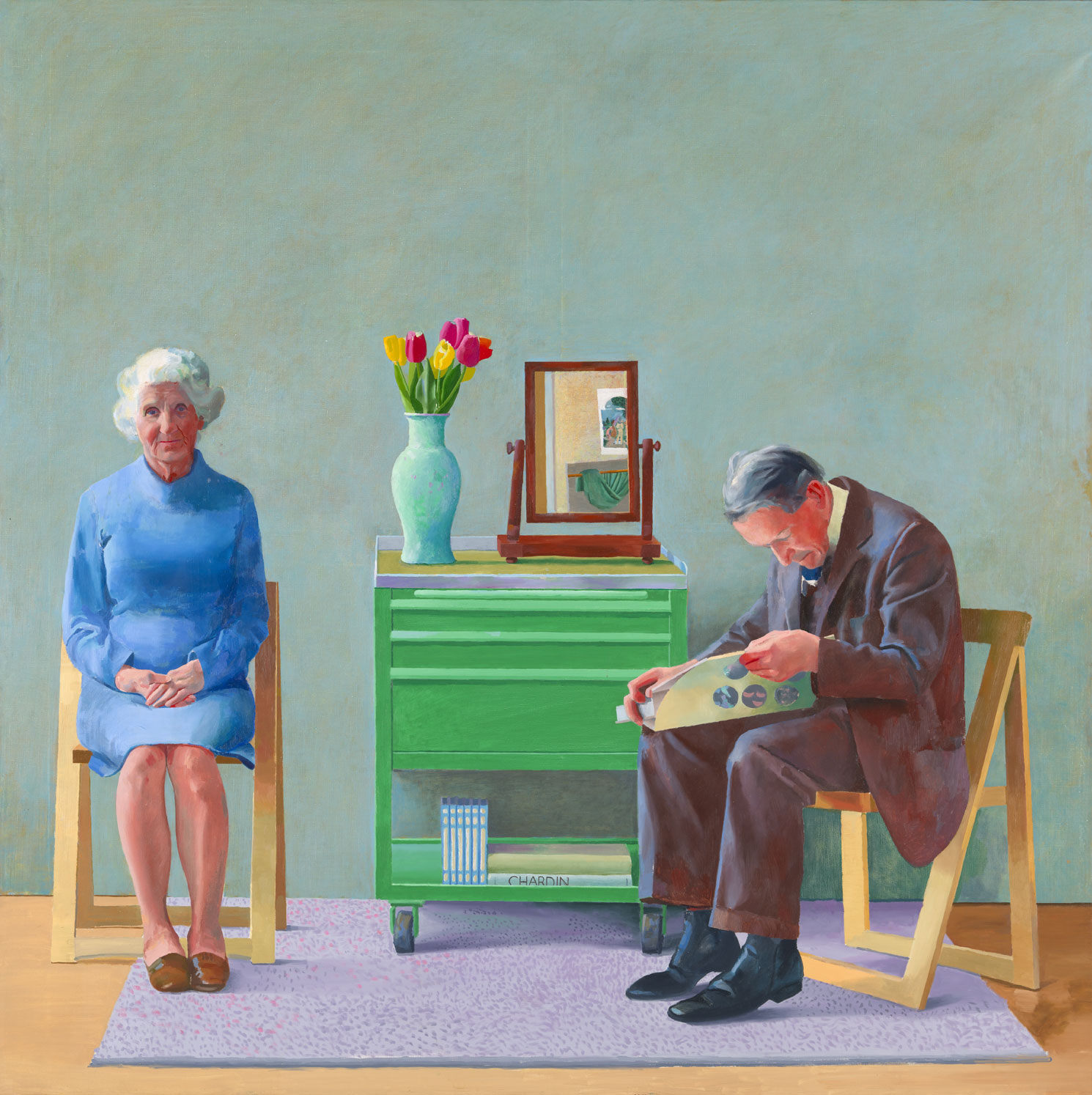
Even though Hockney has cultivated a variety of styles, he still clearly names stylistic phases in his oeuvre. For example, he pursued a naturalistic style in the large double portraits of the 1970s, even if those works are painted in a simplified and highly constructed way. Soon however Hockney felt that illusionistic painting was a trap, which he wanted to avoid. In his view, the true-to-nature photographic image also does not correspond to human perception, which is also shaped by emotions or memories.
Tradition & iPad
In his oeuvre Hockney cultivates traditional painting genres: the landscape, the portrait and the still life. Nevertheless, he reinvents his way of painting repeatedly, in the same vein as his role model Picasso. The artist is also open to new media which he uses with curiosity and a delight in experimentation. In the 1970s it was Polaroid photography, later he drew with an iPhone and bought himself an iPad as soon as they came on the market in 2010. The pictorial idiom of these particular media have changed his works. In his Polaroid photographs he devised images from several perspectives, while the brilliance of the colours on a screen has led to him using stronger shades in his oil paintings.
Multiplication
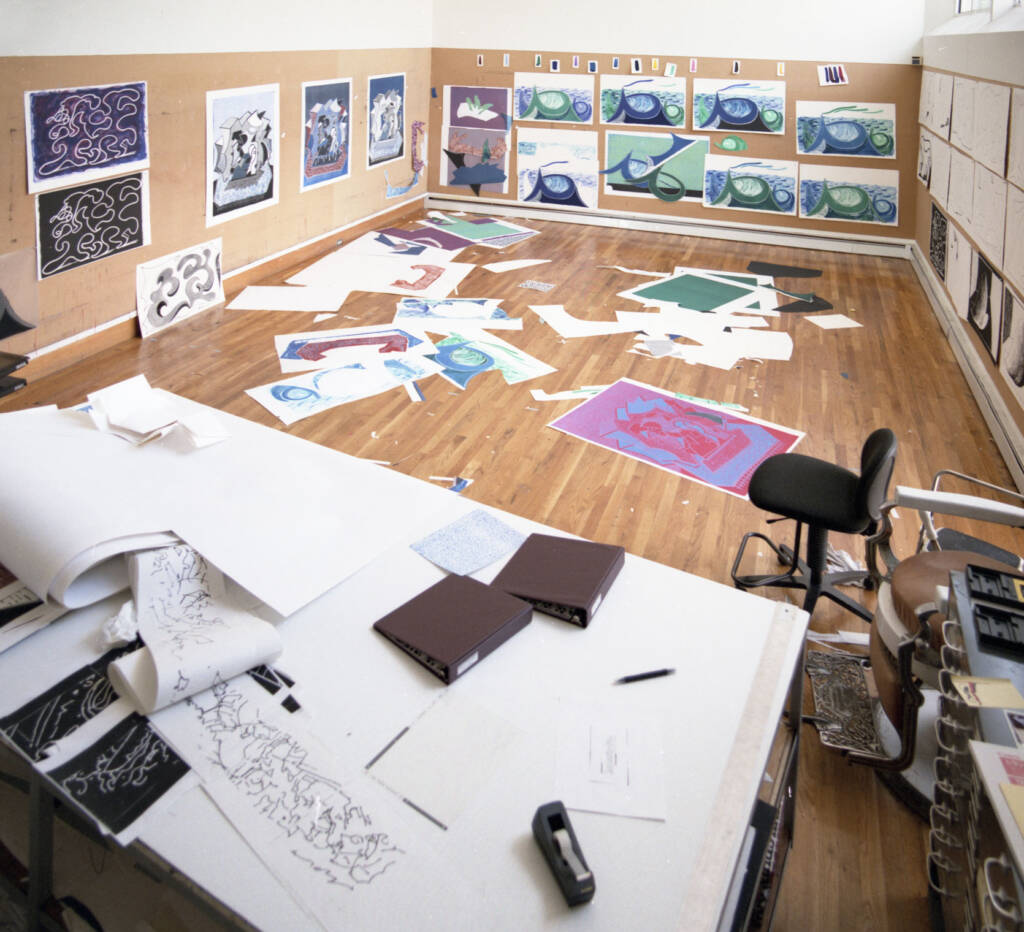
Hockney began to use printing techniques quite early in his artistic career. In the 1960s he published the etchings Illustrations for Fourteen Poems from C.P. Cavafy and A Rake’s Progress. In the 1980s he started working with the master printer Kenneth Tyler. Together they worked on lithographs in Tyler’s studio in Mount Kisco and Bedford Village, New York.
Lithography
Originally the lithograph was a stone print. The name comes from the Greek “lithos” for stone. It is one of the so-called planographic methods of printing, meaning that the motif is not raised from the printing plate like a relief and is not etched or scored into it. The lithograph uses the principle of the immiscibility of water and oil. Artists draw, for example, on a stone using oily chalk. The stone is then moistened. The oil-based printing ink only adheres to the “greasy” parts on which the chalk was used. For his lithographs, Hockney does not draw on stone but on a special foil. The image is then transferred to the printing plates by means of photography. In the case of coloured prints, a new foil is used per colour.
